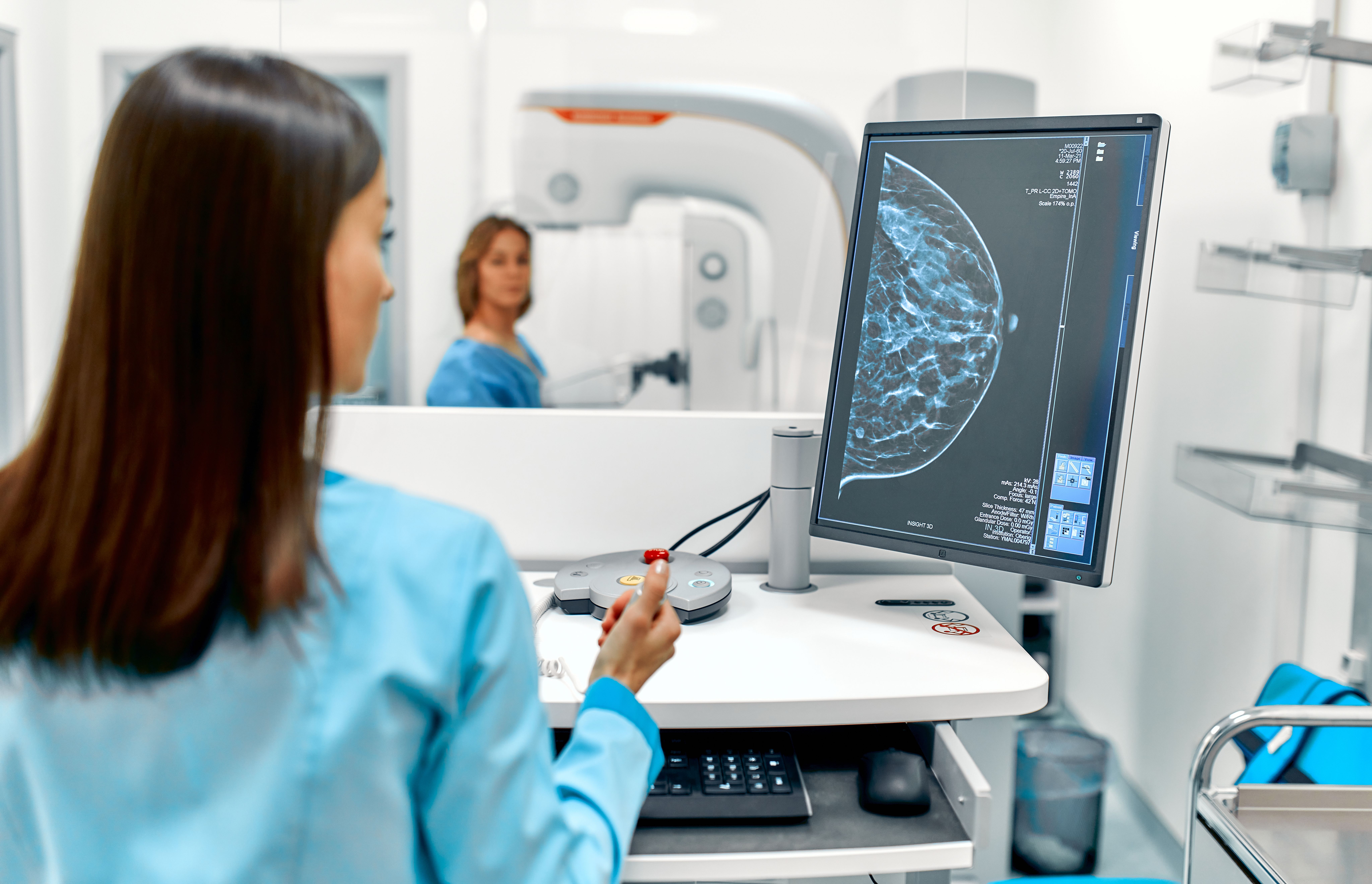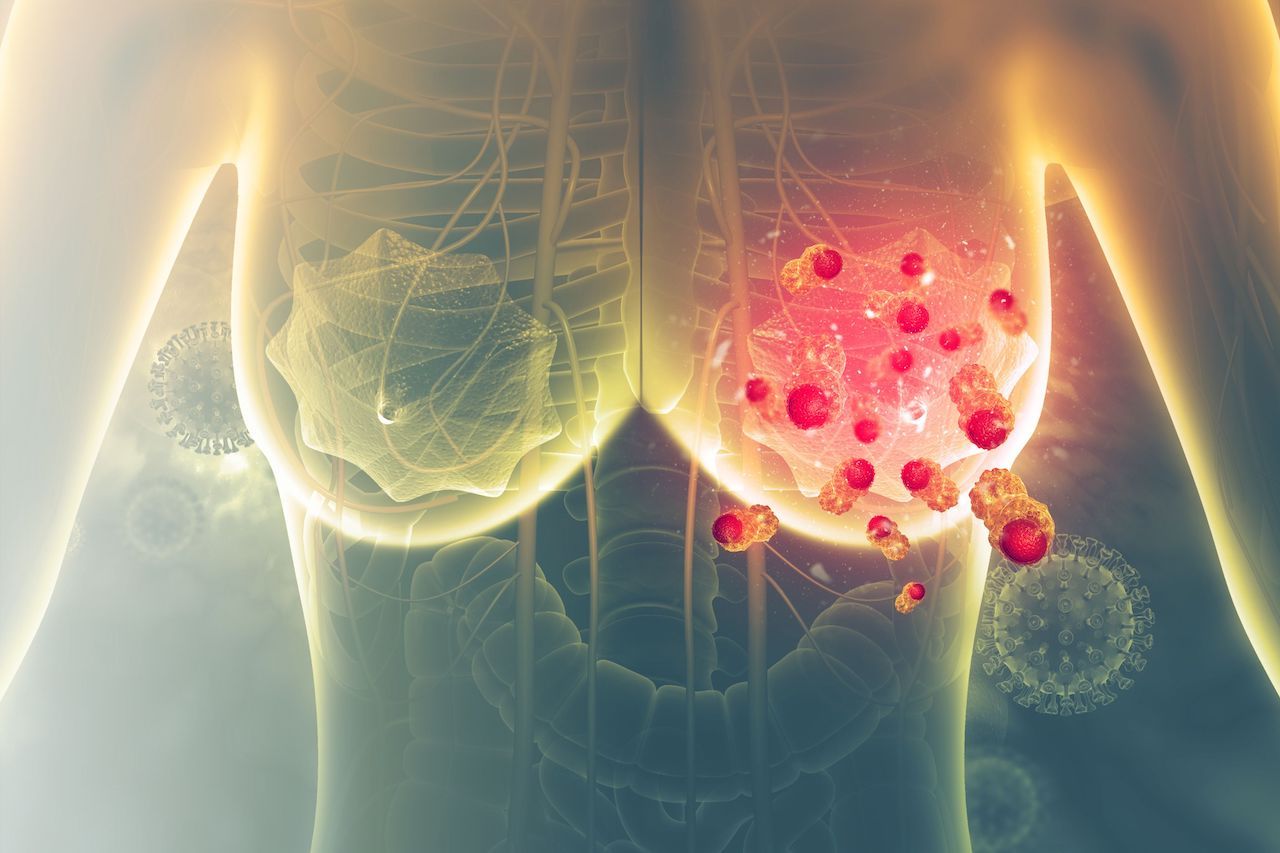Article
Mammography in Women Older Than 75 Does Not Confer an Additional Survival Benefit
Author(s):
Recommendations abound for when women at average risk for breast cancer should begin yearly mammography screening, ranging from age 40 to 50. Questions remain, however, on the optimal age at which to stop. However, with over 50% of women older than age 75 still undergoing mammography, is there a truly safe age at which to stop what has been shown to be a life-saving practice if it does not decrease their mortality from breast cancer?
With over 50% of women older than age 75 still undergoing mammography, is there a truly safe age at when to stop what has been shown to be a life-saving practice if it does not decrease mortality from breast cancer? Data show that breast cancer causes death in one-third of women in whom the disease is diagnosed after the age of 70.1
There is no clear benefit to continuing annual mammography screening in women over the age of 75. That was the conclusion reached by a team of investigators from the Harvard T.H. Chan School of Public Health, Massachusetts General Hospital, and RTI Health Solutions in their study results published Monday in Annals of Internal Medicine.
Recommendations abound for when women at average risk for breast cancer should begin yearly mammography screening. The American Cancer Society says age 452; Mayo Clinic starts providing them at age 403; the American Society of Breast Surgeons, American College of Radiology, and American Colleges of Obstetricians and Gynecologists recommend 40; and the US Preventive Services Task Force says 50.4
Using data on more than 1 million women with traditional Medicare Parts A and B coverage between 2000 and 2008 aged 70 to 84 years, with a life expectancy of at least 10 years, no history of breast cancer, and past mammography screening,5 the study authors looked at mortality rates per 1000 individuals. (Those enrolled in Medicare Advantage plans were excluded). The 2 cohorts consisted of patients who continued getting a yearly mammography (758,127 person-years) versus those who stopped (434,644 person-years), and they were further stratified by age: 70 to 74 years and 75 to 84 years. These patients were followed for a median of 16 months (interquartile range, 14-32) and until the first of 3 predetermined outcomes: death, disenrollment from fee-for-service Medicare, or December 2008.6
Risk of Death
Overall, there were 1533 deaths in the “continue screening” cohort versus 1304 in the “stop screening” cohort during follow-up, and older women whose breast cancer was diagnosed at their baseline visit were less likely to have surgery, radiotherapy, or chemotherapy. For patients 70 to 74 years in the continue screening group, the estimated 8-year risk of death was 2.7 (95% CI, 1.8-3.7) compared with 3.7 (95% CI, 2.7-5.0) in the stop screening group, for a risk difference of —1.0 (CI, –2.3 to 0.1) and a hazard ratio of 0.78 (95% CI, 0.63-0.95). In the 75-to-84 years group, these numbers came in at 3.8 (95% CI, 2.7-5.1) and 3.7 (95% CI, 3.0-4.6), respectively, with a risk difference of 0.07 (95% CI, –0.93 to 1.3) and a hazard ratio of 1.00 (95% CI, 0.83-1.19).6
Risk of Breast Cancer
The overall estimated 8-year risks for breast cancer were 5.5% in the continue screening group and 3.9% in the stop screening group. Broken out by age group, the risk was 5.3% among women aged 70 to 74 years and 5.8% for women 75 to 84 years in the continue screening group and 3.9% for both age cohorts in the stop screening group.6
Mammography Value
The positive predictive value for post—baseline visit mammography was 38.5% in the continue screening group and 45.3% in the stop screening group. For women aged 70 to 74 years, the values were 35.8% and 42.2%, respectively, and among those 75 to 84 years, 41.5% and 48.4%.6
“Continuing to screen women aged 75 years or older does not seem to affect 8-year breast cancer mortality,” the authors concluded. “The reduced benefit in older women is consistent with the hypothesis that competing causes of death, such as cardiovascular or neurologic conditions, overtake breast cancer mortality with increasing age.”
In an editorial on the study, Otis Brawley, MD, from Johns Hopkins University, expressed his wish for progress in this area, noting, “Hopefully, breast cancer treatment of the geriatric population will improve, and future studies can show that quality screening and treatment lead to a reduction in ‘overall mortality’ instead of just ‘breast cancer—specific mortality.’”
References
1. Brawley OW. On mammography screening for women older than 70 years [published online February 25, 2020]. Ann Intern Med. doi: 10.7326/M20-0429.
2. American Cancer Society guidelines for the early detection of cancer. ACS website. cancer.org/healthy/find-cancer-early/cancer-screening-guidelines/american-cancer-society-guidelines-for-the-early-detection-of-cancer.html. Updated May 31, 2018. Accessed February 21, 2020.
3. Pruthi S. Mammogram guidelines: what are they? Mayo Clinic website. mayoclinic.org/tests-procedures/mammogram/expert-answers/mammogram-guidelines/faq-20057759. Published May 8, 2019. Accessed February 21, 2020.
4. Tucker C. Mammogram guidelines: which should women follow. Tufts Medical Center Community Care website. hhma.org/blog/mammogram-guidelines-which-should-women-follow/. Accessed February 21, 2020.
5. Garcıa-Albeniz X, Hernan MA, Logan RW, Price M, Armstrong K, Hsu J. Continuation of mammography screening in women older than 70 years [published online February 25, 2020]. Ann Intern Med. doi: 10.7326/P20-0002.
6. Garcıa-Albeniz X, Hernan MA, Logan RW, Price M, Armstrong K, Hsu J. Continuation of annual screening mammography and breast cancer mortality in women older than 70 Years [published online February 25, 2020]. Ann Intern Med. doi: 10.7326/M18-1199.





